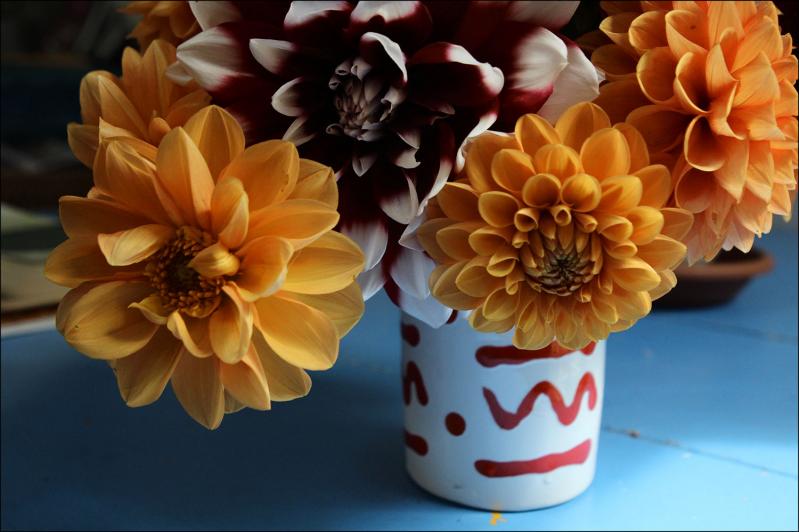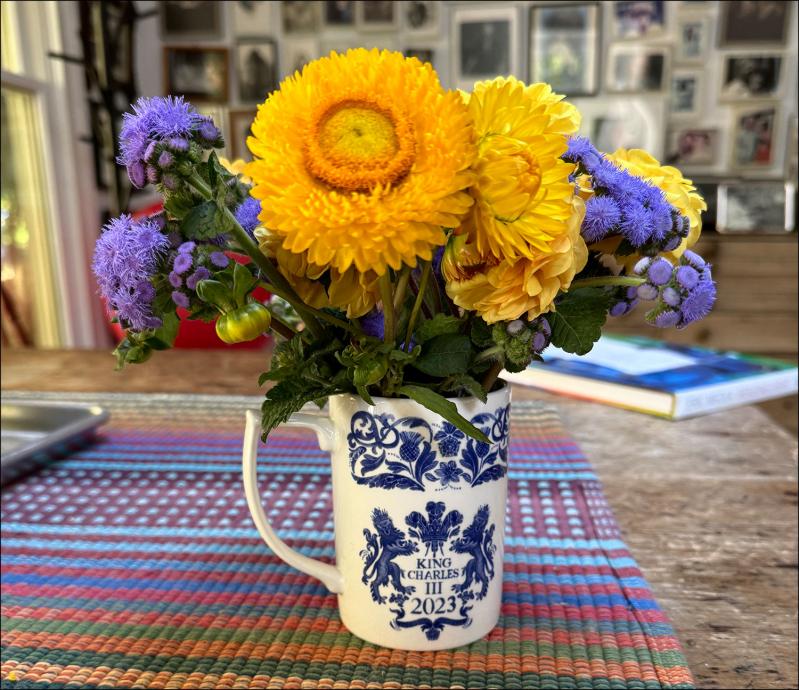Georgia O’Keeffe once said, “When you take a flower in your hand and really look at it, it’s your world for the moment.”
In the spirit of the pioneering modernist painter’s hope to give that world to others, The Star spoke with two local anthophiles about extending the ‘moment’ of both store-bought and hand-harvested bouquets.
Folks may have heard that a bit of sugar can provide nutrients to fresh blooms after being separated from a plant, or that dropping a penny minted before 1982 into a vase can extend the life of a bouquet because the copper acts as a fungicide. But these supposed tricks weren’t top of mind for MaryAnn Tracey of Sleeping Bee Flowers, a farm and cut-flower farm stand in East Hampton, and Ashley Anne Boer, a freelance floral designer from Sag Harbor, both of whom championed the importance of both clean vessel and water, as well as cutting off foliage and managing stems, to keep flowers looking fresher for a longer time.
Keep It Clean
Both Ms. Tracey and Ms. Boer both stressed the importance of starting the process by cleaning whatever vessel one takes out of their closet, cabinet, shed, or storage space.
“Always start with a clean vase because any dirt will get sucked up into the stem and clog it up, which prevents the flower from drinking properly,” said Ms. Tracey.
While she personally prefers a small drop of bleach to an old penny — to keep bacteria and algae at bay — both she and Ms. Boer said they prefer continuously freshening up a bouquet’s water.
“Even if, at a minimum, you’re just holding flowers in place as you tip the vase and pour the old water out and put clean water in, versus just letting them sit for however long they last, that should extend the life [of a bouquet] from four to five days to seven or maybe eight,” Ms. Boer said. “It depends on if they’re soft-stemmed or hard-stemmed flowers.”
Soft-stemmed flowers like zinnias, marigolds, sunflowers, daffodils, and dahlias will drop debris into the water at accelerated rates while also being more sensitive to blockages.
Foliage Is Not Our Friend
While hard-stemmed flowers like hydrangea or lilac don’t emit as much debris as soft-stemmed species, it is equally important to remove the vast majority of foliage, and not just the leaves lying low enough to dirty the water.
“Especially with hydrangea,” said Boer, “they have hardy leaves that definitely steal water. Hydrangea has water in the name — ‘hydra’ — so it wants all the water, and that’s just one example. All leaves can compete with flowers for water.”
Stay Out of the Sun
Speaking of the Hamptons’ floral mascot — hydrangea — an important note for those cutting some from their garden or elsewhere, according to Ms. Tracey, is picking the right time of day to do so.
“You always want to make sure to harvest flowers in the morning and later in the afternoon when the hot peak of day has passed,” she said. “We always harvest at those times on our farm to make sure the flowers last longer.”
Many hard-stemmed flowers benefit from a 45-degree angle cut to ensure more surface area is exposed. This enables the blooms to suck up water, but Ms. Tracey said a pro tip for hydrangea is to cut a small slit into the stem and then dip them into a vase with boiled water, which will seal the bottom, address the sap, and help the flowers hydrate better.
Speaking of water temperature, both experts say feeding flowers warm water is preferable over cold; and they advise keeping bouquets out of direct sunlight as well as away from heat sources. Ms. Boer said one can even mimic a floral fridge by placing their vases in the bathroom at night with a window cracked.
The Longest Time
While it’s generally important not to let flowers run dry of water, also consider the following from Ms. Boer if you’re looking for a bouquet that will truly stand the test of time.
“I really like for long-lasting flowers, things like thistle or different types of protea — flowers that look really great when they’re fresh and then over time dry out and retain that same look,” she said, pointing to eucalyptus as another example. “I grew up in California, where there were a lot of eucalyptus trees, so I’ve always really enjoyed working with it and smelling it. Balsam [Farm] actually grows it in the summer and uses it in their farm bouquets, but I got some from Trader Joe’s that I just let stay in the vase and now it’s completely dried and looks pretty much the same as it did when it was fresh. It’s not as fragrant because it’s no longer fresh, but depending on the flower and the foliage, that is always an option.”


